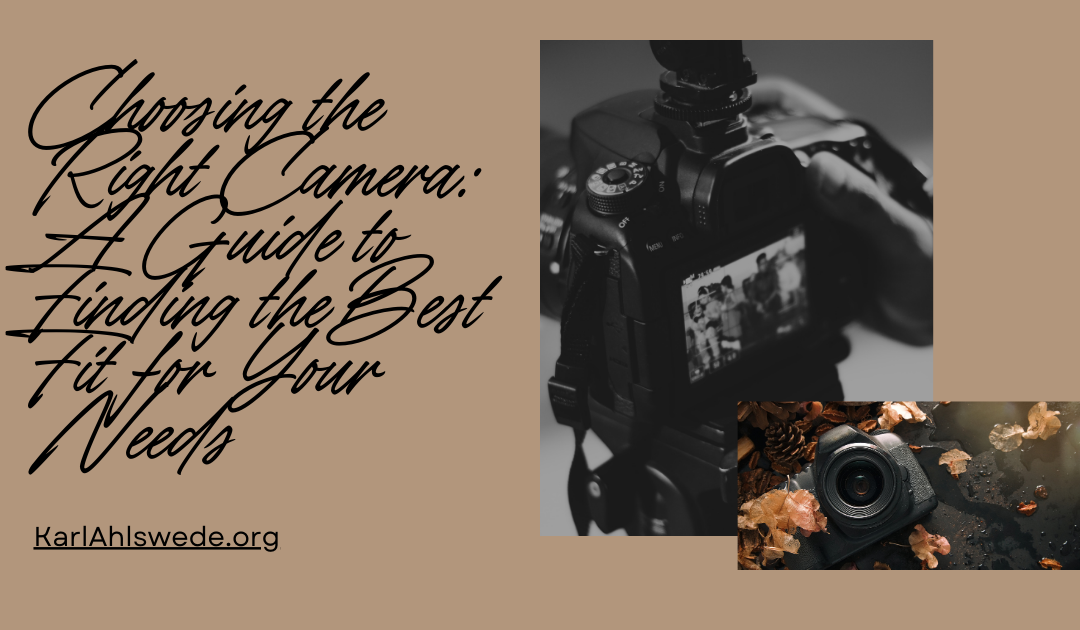Selecting the right camera can be overwhelming with so many options available, each designed for different skill levels, purposes, and budgets. Whether you are a beginner looking to take better photos or a professional seeking an upgrade, understanding the key features and types of cameras will help you make an informed decision.
The first consideration when choosing a camera is identifying how you plan to use it. For casual photographers who want a simple, portable option for everyday use, a compact point-and-shoot camera might be ideal. These cameras are lightweight, easy to use, and often come with automatic settings that require minimal adjustments. While they may not offer the advanced features of professional models, they are excellent for quick shots and travel photography.
For those who want more control over their images and better image quality, mirrorless cameras and DSLR cameras are popular choices. Mirrorless cameras are compact and lightweight while still offering interchangeable lenses and manual controls. They are great for travelers, vloggers, and hobbyist photographers who want flexibility without the bulk of a DSLR. On the other hand, DSLRs provide a robust design with optical viewfinders, long battery life, and excellent lens compatibility. These cameras are well-suited for photographers who enjoy shooting in various lighting conditions and need high-quality images for professional or artistic purposes.
Sensor size is another crucial factor in choosing a camera. Larger sensors capture more light, resulting in better image quality, especially in low-light situations. Full-frame sensors provide superior detail, dynamic range, and depth of field control, making them ideal for professionals. APS-C sensors, found in many DSLRs and mirrorless cameras, offer a balance of quality and affordability. Micro Four Thirds sensors, which are even smaller, allow for lightweight camera bodies and lenses while still delivering excellent image quality.
The type of photography you are interested in also influences the camera choice. For landscape and nature photography, a camera with a high-resolution sensor and wide dynamic range is beneficial. Portrait photographers often prefer cameras with full-frame sensors and high-quality prime lenses for stunning background blur. Sports and wildlife photographers need cameras with fast autofocus, high burst rates, and telephoto lens compatibility to capture action shots. Understanding your primary photography interests will help you choose the right features.
Video capabilities are another consideration for those who want to record high-quality videos. Many mirrorless and DSLR cameras offer 4K recording, high frame rates, and in-body stabilization, making them excellent for videographers. If you plan to vlog or shoot cinematic footage, a camera with a flip-out screen and good autofocus is essential. Some compact cameras and action cameras are also designed specifically for video content creators, offering excellent stabilization and built-in microphones.
Budget plays a significant role in the decision-making process. Entry-level cameras provide great features for beginners without breaking the bank. Mid-range cameras offer advanced settings and better image quality for enthusiasts. Professional-grade cameras come with the best sensors, build quality, and features, but they can be expensive. It is important to balance your needs with your budget to ensure you get the best value for your investment.
Trying out cameras before purchasing is always a good idea. Visiting a camera store and holding different models can help you determine which one feels comfortable in your hands. Online reviews, sample images, and comparison videos can also provide insight into how a camera performs in real-world conditions.
Choosing the right camera requires careful consideration of your photography goals, budget, and the features that matter most to you. With so many great options available, finding the perfect fit will enhance your photography experience and help you capture stunning images that match your creative vision.

